SZ's green initiative: International Mangrove Center and eco efforts
Writer: Wang Jingli | Editor: Lin Qiuying | From: Original | Updated: 2024-11-25
The world’s first International Mangrove Center (IMC) was officially established in Shenzhen on Nov. 6, as representatives from 18 member countries signed an agreement to establish the landmark institution. This milestone follows approval of the proposal by the Standing Committee of the Ramsar Convention in September 2023, turning the vision into a reality with action plans already in motion.
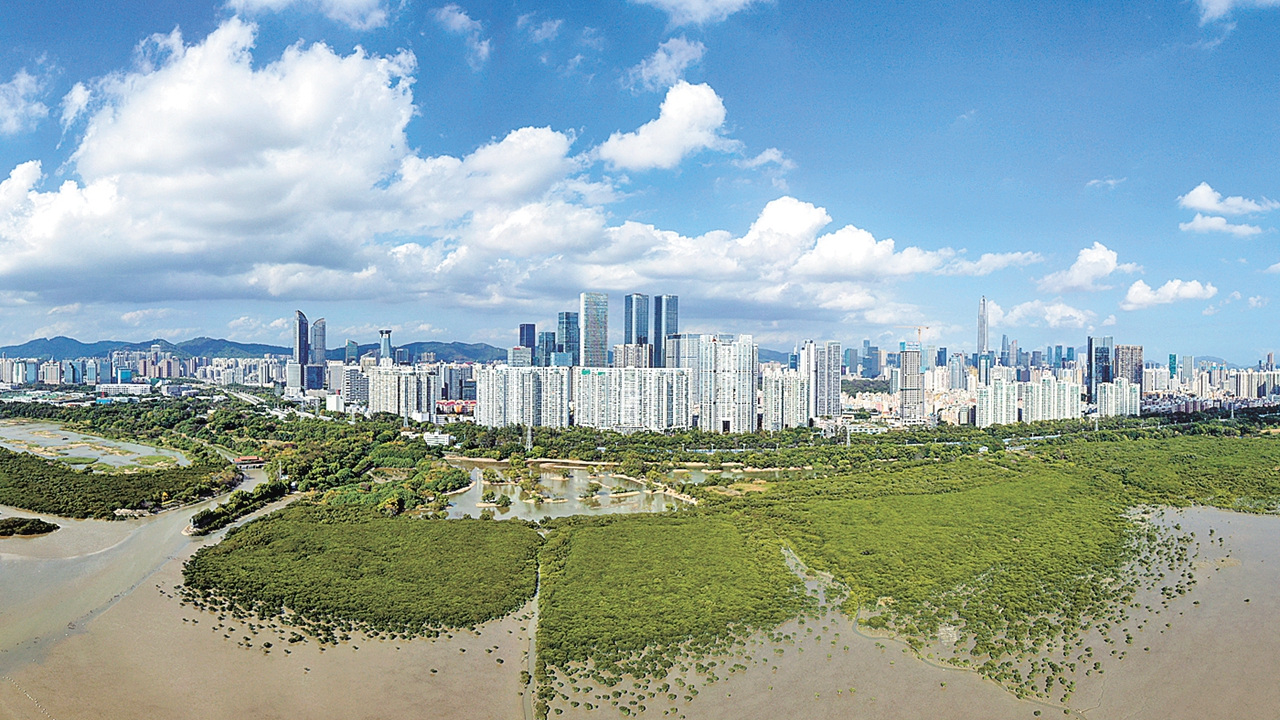
A panoramic view of the Futian Mangrove National Nature Reserve. Xinhua
The IMC represents a significant step forward in global environmental governance and will play a key role in advancing the United Nations’ 2030 Agenda for Sustainable Development. The center aims to showcase best practices and innovative approaches to mangrove protection, develop global standards for their conservation and sustainable use, and lead collaborative international research projects.
As a vital platform for fostering international cooperation on mangrove and coastal blue carbon ecosystems, the IMC will both promote openness, inclusiveness, co-building, shared progress, and win-win collaboration and build a robust global mechanism for mangrove conservation.
Significance of the IMC
Lin Jian — a member of Academia Europaea, chair professor and director of the Advanced Institute for Ocean Research at the Southern University of Science and Technology (SUSTech), and leader of the Shenzhen Ocean University Preparatory Team — views the IMC’s establishment as exciting news. He said, “This signifies that we are embarking on new and pioneering endeavors. The knowledge acquired here holds the potential for global application.”

A resident reads ecological education posters at the Futian Mangrove Ecological Park's education center. Photos by Liu Xudong except otherwise stated
Ana Gouveia, assistant professor at the Institute of Environment and Ecology at Tsinghua Shenzhen International Graduate School, noted that the establishment of the IMC brings substantial benefits to the people of Shenzhen. In her opinion, the center will enhance environmental awareness and education, foster a connection between the community and its natural surroundings, and promote environmental responsibility across all age groups.
Gouveia added that the center’s emphasis on openness and cooperation is crucial in addressing common global environmental challenges. “Mangroves and coastal ecosystems worldwide face similar pressures, such as climate change and pollution, so an international cooperation platform is invaluable. The center enables countries to collaborate on ecosystem preservation through collaborative research and shared expertise,” she said.
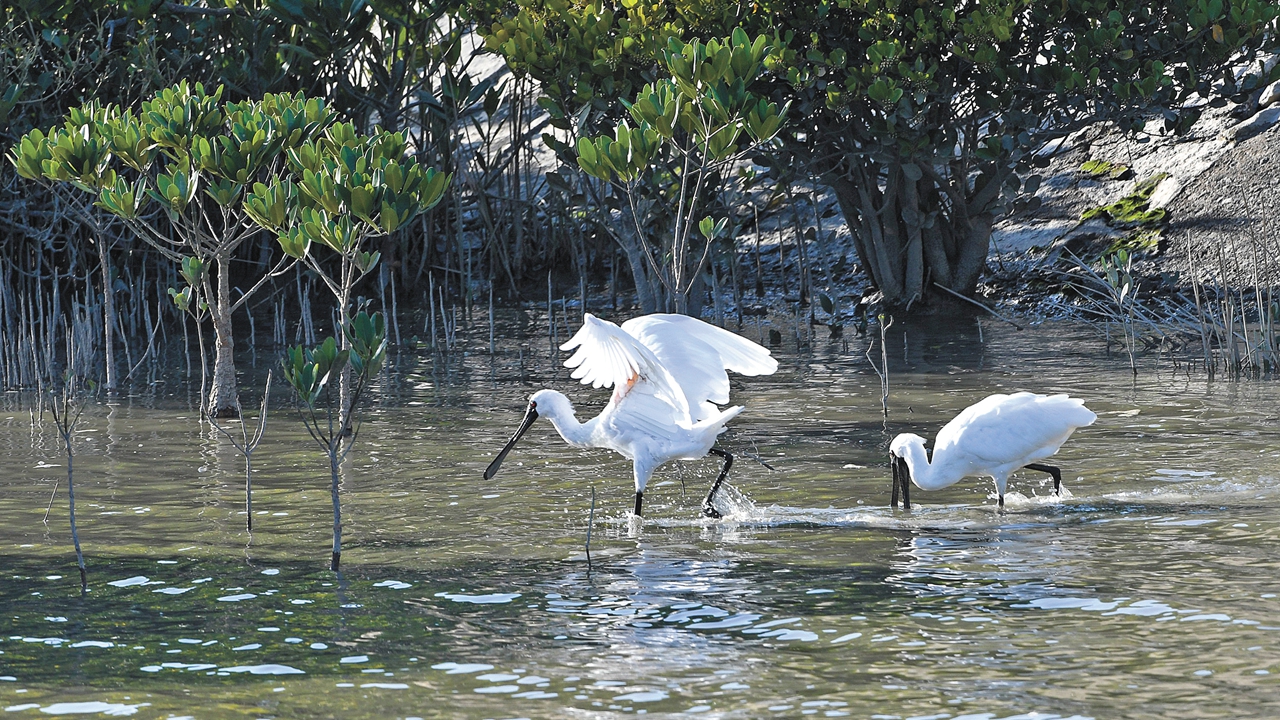
Black-faced spoonbills are seen foraging at the Futian Mangrove National Nature Reserve. Xinhua
Italian ecosystem expert Matteo Convertino, also an associate professor at the Institute of Environment & Ecology at Tsinghua Shenzhen International Graduate School, highlighted the significance of the IMC. “First, it can help better restore the city’s coastal nature, and second, it will set a benchmark for other cities worldwide facing similar problems,” said Convertino during an interview with Shenzhen Daily.
He also suggested that the center will sponsor interdisciplinary endeavors that aim to study the ecology of mangroves and envision the future of coastal ecosystems inspired by mangrove structure and function.
Roles of mangroves
Mangroves play a crucial role in purifying seawater, mitigating storm surges, supporting biodiversity, and sequestering carbon. As Shenzhen’s official tree and a key wetland species, mangroves are primarily found in the Futian Mangrove National Nature Reserve, China’s smallest national nature reserve.
The reserve hosts rare species like Excoecaria agallocha, Bruguiera gymnorrhiza, Savigny, and Kandelia obovata and serves as a vital stopover for migratory birds on the East Asian-Australasian flyway. Together with Hong Kong’s Mai Po Nature Reserve, it forms the Deep Bay Wetlands ecosystem.
“Mangroves are very important because the mangrove is located in a very unique area between the ocean and the land. When you have typhoons and other major events, mangrove areas are much more stable,” said Lin.
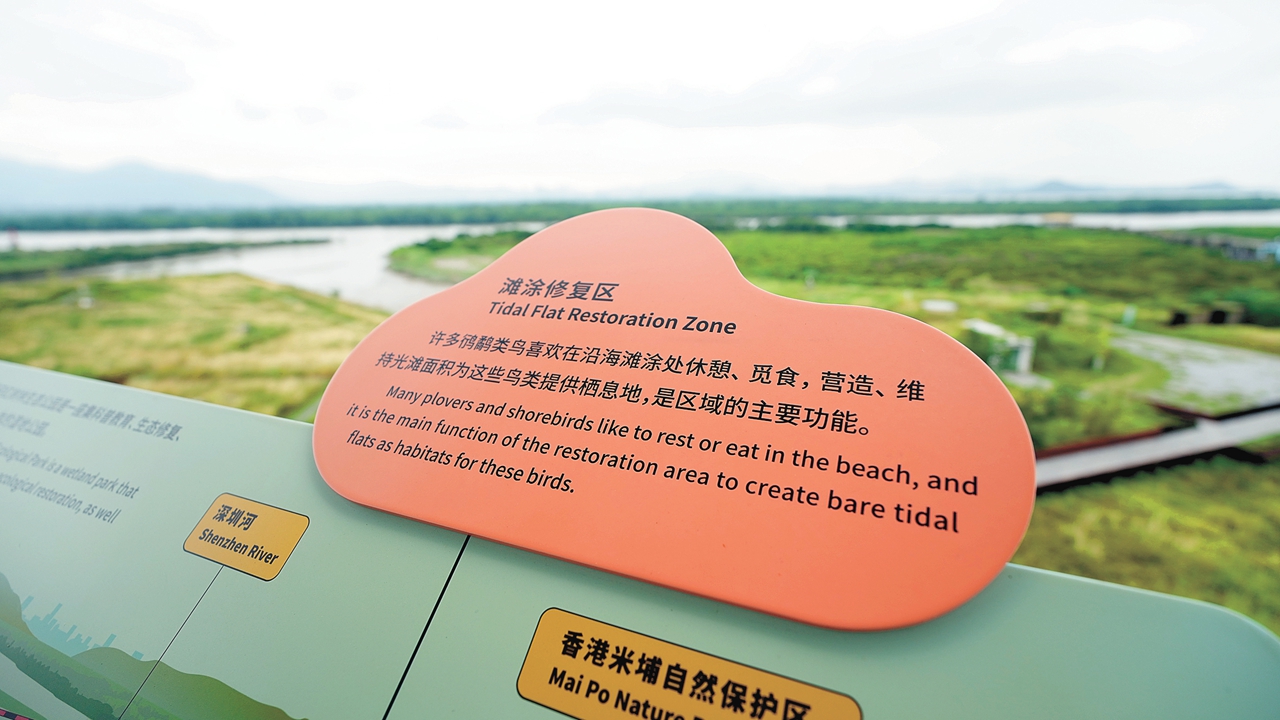
A sign at the Futian Mangrove Ecological Park is seen in front of a restored tidal flat where mangrove trees and birds thrive.
In addition to absorbing carbon dioxide and mitigating greenhouse effects, mangroves can play a role in carbon trading. Companies can use carbon credits from mangrove conservation and restoration to offset their emissions.
China’s first mangrove carbon sink auction took place in Shenzhen in September of last year, with a starting price of 183 yuan (US$25.51) per metric ton. On Nov. 20, a carbon sink auction for mangrove forests was successfully held in Shenzhen, focusing on the mangroves of Zhenhai Town, located in Enping City within Jiangmen, Guangdong Province.
This auction resulted in a total turnover exceeding 1.98 million yuan, which sets a new record for a single auction of mangrove protection carbon sinks within the country. This auction also signifies the first instance of Shenzhen’s blue carbon model being promoted beyond its municipal boundaries.
Mangrove, ecological protection
China has placed a high priority on mangrove conservation and initiated various actions to safeguard these ecosystems. China’s new law on wetlands protection took effect June 1, 2022.
To date, China’s mangrove area has expanded to 3,030 hectares, which is equivalent to nearly 4,329 standard football pitches. China stands out as one of the few countries globally that has experienced a net increase in its mangrove area.
Official data show that Shenzhen has 36,100 hectares of wetlands, with mangroves covering 296 hectares, and 61% of the wetlands are designated as protected conservation areas. In the past two years, Shenzhen has created 15.48 hectares of mangrove forests and restored 103 hectares of existing mangrove forests.
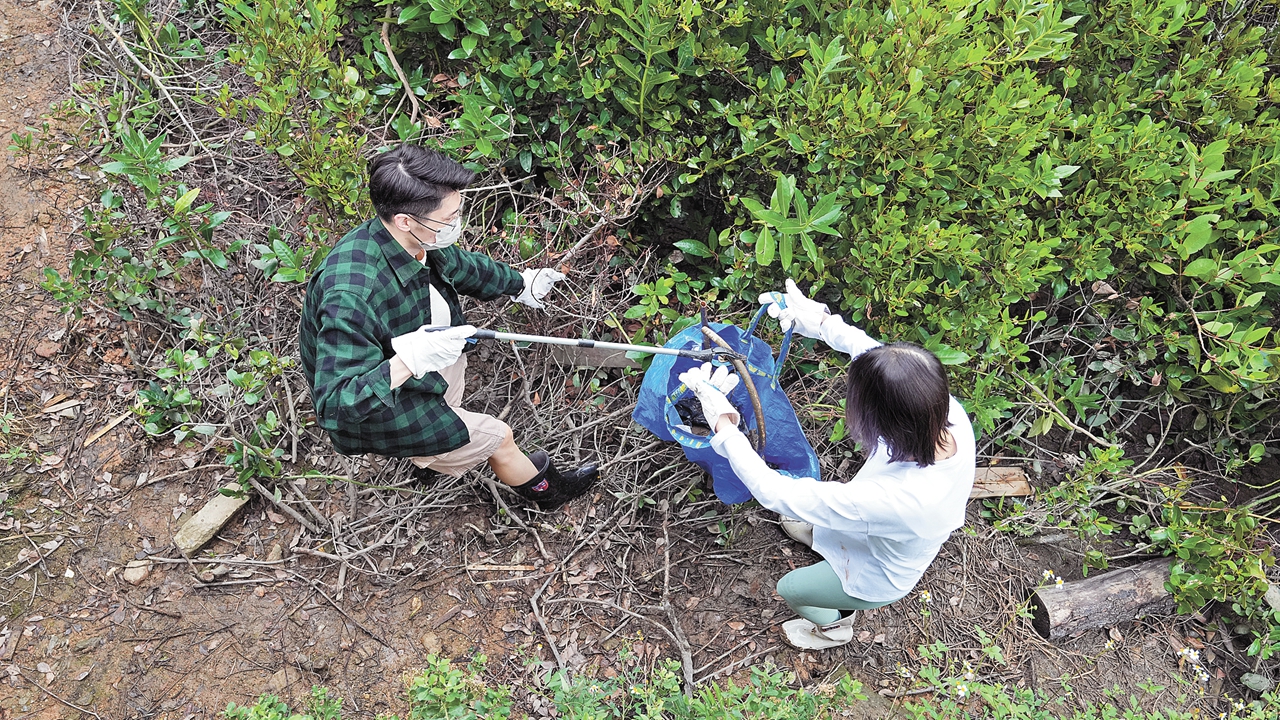
Residents pick up garbage at the Futian Mangrove Ecological Park.
Gouveia said that “Shenzhen’s restoration of mangrove forests in the past two years has been impressive. These timely efforts address the urgent challenges of biodiversity loss and climate change. By re-establishing native mangrove species and enhancing local habitats, Shenzhen exemplifies how cities can actively participate in conservation. This commitment reflects a progressive integration of environmental goals within urban development, offering a model of ecological sustainability for other urban regions.”
In Shenzhen, mangrove forests have become crucial habitats for hundreds of thousands of migratory birds and rare animals. To safeguard biodiversity, including mangroves, wetlands, and birds, an increasing array of new technologies and products are being utilized.
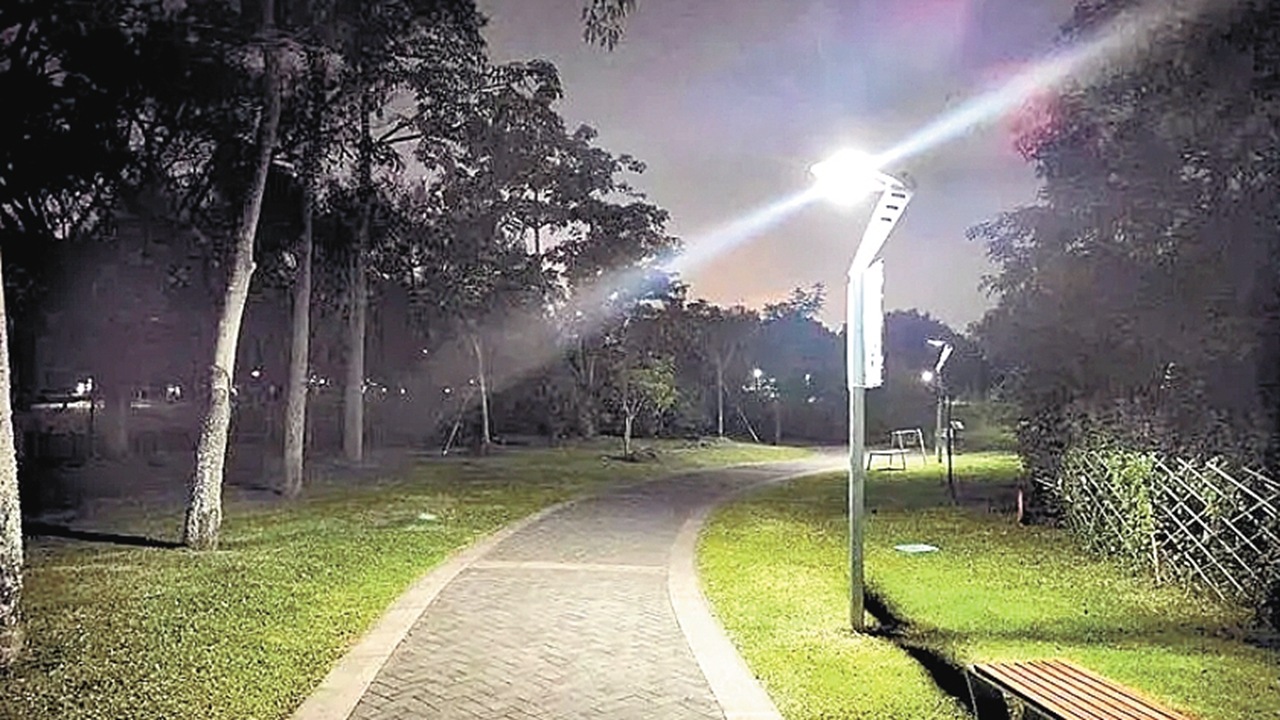
This photo shows the same street lamp before upgrading at the Futian Mangrove Ecological Park. Street lamps there now provide fixed lighting ranges with minimal glare.

This photo shows the same street lamp after upgrading at the Futian Mangrove Ecological Park. Street lamps there now provide fixed lighting ranges with minimal glare.
Last year, tech giant Tencent took a unique step to prevent bird collisions by applying polka-dot stickers to the outer glass curtain wall of its headquarters in Yuehai Subdistrict. This initiative resulted in the headquarters becoming the country’s first “bird-friendly building.”
At the Futian Mangrove Ecological Park, biodiversity-friendly street lamps that provide fixed lighting ranges with minimal glare have been installed to facilitate bird nesting.